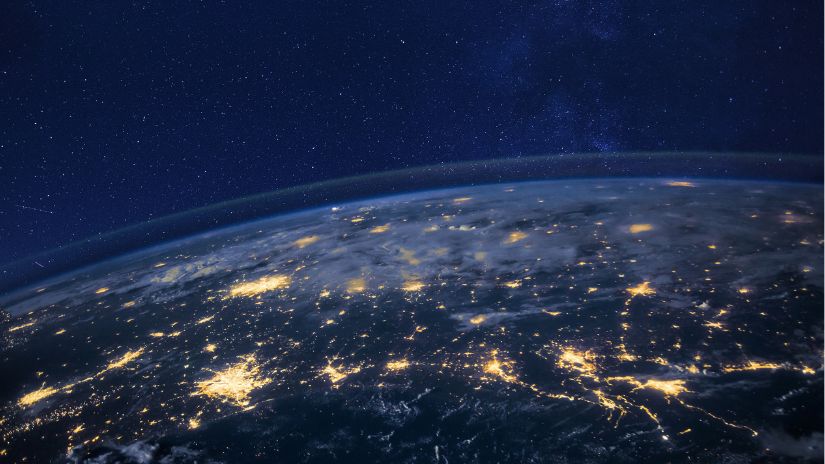- There are currently 574 active and planned underwater cables around the world
- Underwater cables are built between locations that have something important to communicate
- Around 99% of our connectivity to the rest of the world comes from underwater subsea cables

Almost all of our international digital connections rely on underwater subsea cables in Australia, which span approximately 400,000 kilometres on the ocean floor. To put this into perspective, you could encircle the globe ten times with that amount of cable.
These cables are crucial for all kinds of communication, whether it's chatting with relatives abroad or streaming your favourite shows. They're the backbone of our digital connectivity, handling a vast array of communication needs.
Who relies on submarine cables?
Submarine cable capacity is used by a diverse array of users. Telecom carriers, mobile operators, multinational corporations, governments, content providers, and research institutions all depend on submarine cables to transmit data globally.
Essentially, anyone accessing the Internet, regardless of their device, has the potential to use submarine cables.
Why don't companies use satellites instead?
While satellites excel in reaching areas without fibre infrastructure and distributing content to multiple locations, they can't match the efficiency of fibre-optic cables in terms of data capacity and cost-effectiveness.
Compared to fibre optic cables, satellites handle only a minuscule fraction of global data traffic.
Australia’s underwater Internet cables
Here is a list of the cables that connect Australia to the rest of the world provided by Telegeography:
Asia Connect Cable-1 (ACC-1) – Due 2027
At 19,000km long, this cable will connect Darwin, NT, to Indonesia, Guam, Philippines, Singapore and Timor-Leste before landing in Hermosa Beach, California, USA when it launches in 2027.
Australia-Japan Cable (AJC) Network
The 12,700km cable stretches from Japan to Guam, then on to Australia. This cable currently runs at speeds of up to 320Gbps.
Australia-Singapore Cable (ASC) Network
The ASC fibre optic pipe network goes straight from Singapore to Perth, and stretches for 4,600km.
It has landing points in Perth, WA, Flying Fish Cove, Christmas Island, Anyer, Indonesia and Tanah Merah. Singapore.
Bass Strait-1 and Bass Strait-2
These two cables have been established for over 20 years, connecting the Australian mainland to Tasmania. The Bass Strait-1 is 241km in length and the Bass Strait-2 is 239km in length. Both cables are owned by Telstra.
Basslink
This cable sits at 298km in length and connects Tasmania and Victoria. Owned by Basslink Telecoms, it's designed to connect Tasmania to the mainland.
Coral Sea Cable System
This system of cables is 4,700km in length and has landing points in Sydney, NSW, Papua New Guinea and the Solomon Islands.
East Coast Cable System – Due 2025
This cable systemfrom Vocus will measure 1,600km in length and connect three points on Australia's east coast: Brisbane, Melbourne and Sydney. It’s set to launch in 2025.
Gondwana-1 Network
This relatively small network has been laid between Sydney and Noumea in nearby New Caledonia. It is 2,151km long, and is owned by New Caledonian telecommunications provider OTC.
Hawaiki
A larger cable than most at 14,000km long, it is owned by the Hawaiki Submarine Cable LP. With landing points at American Samoa, New Zealand and the US, this cable connects to Sydney, NSW.
Hawaiki Nui – Due 2026
Another cable owned by the Hawaiki Submarine Cable LP, this is set to be a much bigger cable at 25,000km. There will be landing points spanning four different Australian locations before hitting Indonesia, New Zealand, Singapore and the United States.
Honomoana – Due 2026
As yet, this cable hasn't been established - it's due for completion by 2026. It's going to connect Australia to French Polynesia and the United States. Owned by Google, its length is yet to be determined.
INDIGO-Central
Owned by five different companies, this 4,850km cable connects Alexandria, NSW with Perth, WA.
INDIGO-West
This INDIGO line is owned by six companies, including Telstra, and connects Perth, WA, Indonesia and Singapore via a 4,600km cable.
Japan-Guam-Australia South
This 7,081km cable is co-owned by AARNET, Google and RTI. It connects Brookvale, NSW with Maroochydore, QLD and Guam.
North-West Cable System
A relatively short system, this 2,100km cable connects the Northern Territory to Western Australia.
Oman Australia Cable (OAC)
At 11,000km, this cable is larger than most and connects Perth, WA to the British Indian Ocean Territory, Cocos (Keeling) Islands and Oman for better connectivity.
PIPE Pacific Cable
Owned by Pipe Networks, which is owned by TPG Broadband, this 6,900km long cable stretches from Guam to Papua New Guinea, then on to Sydney.
SeaMeWe-3 Cable Network
This is a massive network that is partly owned by 48 companies, including both Telstra and Optus. The network is 39,000km long, starting in Northern Europe, and finally ending in South Korea and Perth.
It has stations in nearly 40 locations, including Germany, Portugal, Turkey, Africa, India, China, Indonesia and many more countries along the way.
Southern Cross Cable Network
One of Australia’s main cables is the Southern Cross Cable Network, which is 30,500km long, and travels from California to Hawaii, to New Zealand, to Sydney, and then back to Fiji, Hawaii, and finally arriving in Oregon, USA.
Sections of this cable are over seven kilometres below sea level. It only takes seven hundredths of a second for data to go from Australia to the USA, and on June 10, 2011 the network had a successful trial of a 100 Gigabit per second (Gbps) transmission.
Southern Cross NEXT
Stretching 13,700km, the Southern Cross NEXT cable has landing points in Fiji, Kiribati, New Zealand, Tokelau and the United States all connecting to Alexandria, NSW.
SMAP – Due 2026
The Sydney-Melbourne-Adelaide-Perth cable is 5,000km long and has landing points across four different Australian states: SA, WA, NSW and VIC.
Tabua – Due 2026
Due to be finished by 2026, the Tabua cable is planned to have landing points in Australia, Fiji and the United States. The total length of the cable is yet to be determined.
Tasman Global Access Cable
The TGA cable is 2,288km long between Oxford Falls, NSW and Raglan, New Zealand. It's part of the Telstra cable network.
Telstra Endeavour Cable Network
This 9,125km fibre optic pipe stretches from Hawaii to Sydney. It was laid in 2008 and provides an improvement in latency over the existing systems.
Switching providers?
If you’re looking for better connectivity, call our Compare Broadband team. Let’s get you set up with an Internet provider that makes sense.


